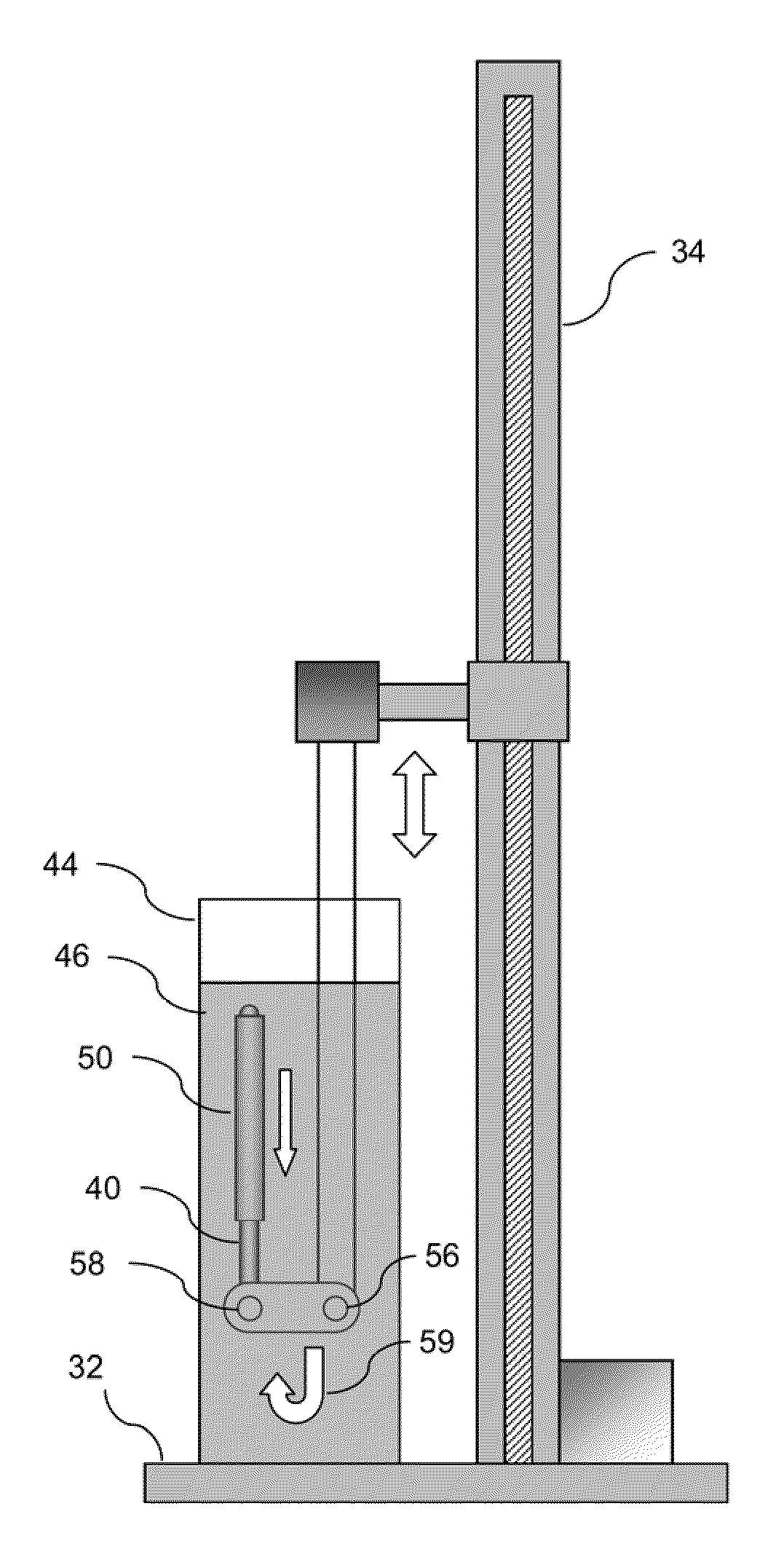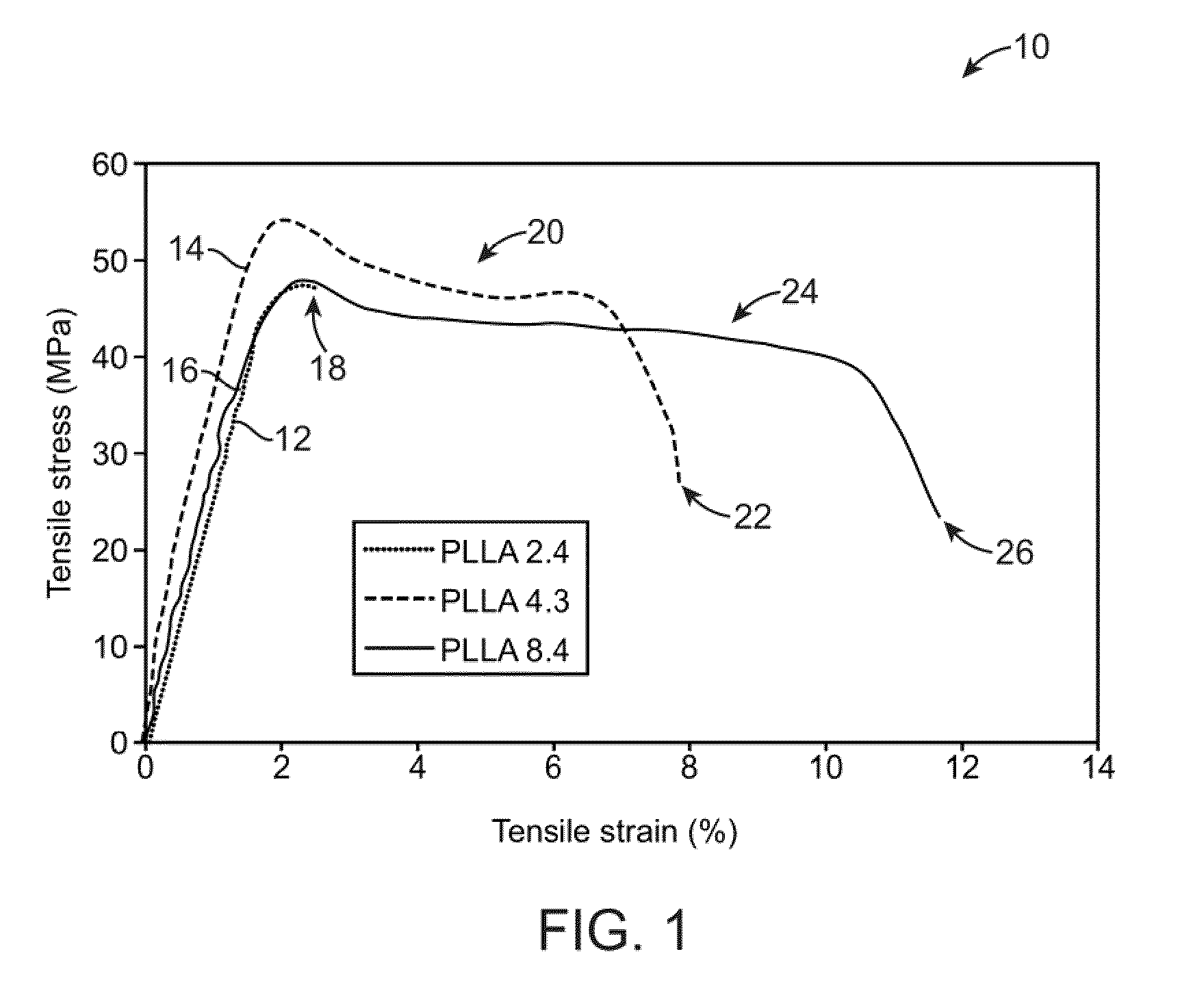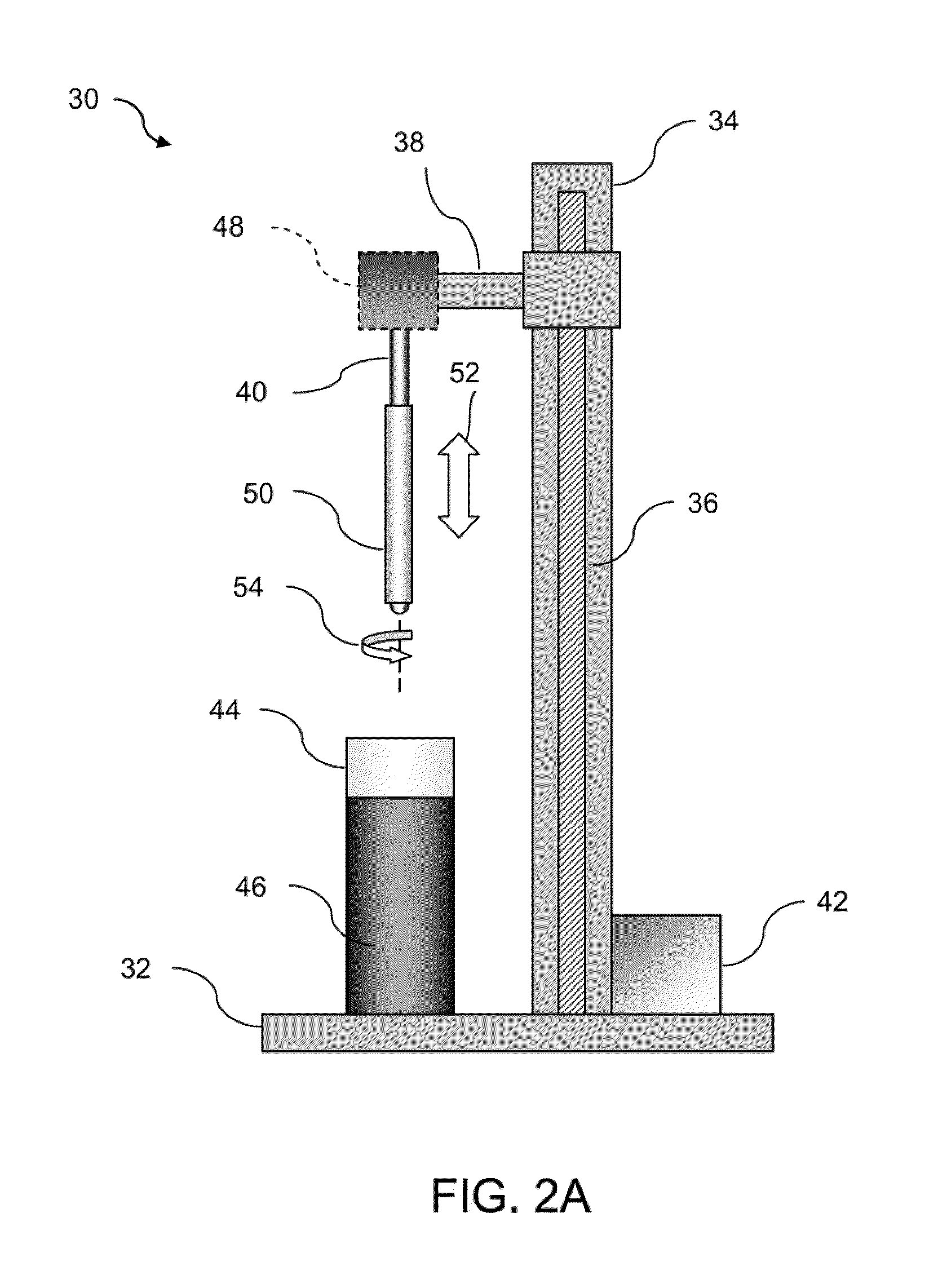Stent fabrication via tubular casting processes
a tubular casting and fabrication process technology, applied in the field of manufacturing processes for forming or creating devices, can solve the problems of reducing the reducing flexibility, and generally a transition from ductile failure to ductile failure. to achieve the effect of reducing flexibility, preventing ductile failure, and enhancing mechanical properties of the formed substra
- Summary
- Abstract
- Description
- Claims
- Application Information
AI Technical Summary
Benefits of technology
Problems solved by technology
Method used
Image
Examples
Embodiment Construction
[0039]In manufacturing implantable devices from polymeric materials such as biocompatible and / or biodegradable polymers, a number of casting processes described herein may be utilized to develop substrates, e.g., cylindrically shaped substrates, having a relatively high level of geometric precision and mechanical strength. These polymeric substrates can then be machined using any number of processes (e.g., high-speed laser sources, mechanical machining, etc.) to create devices such as stents having a variety of geometries for implantation within a patient, such as the peripheral or coronary vasculature, etc.
[0040]An example of such a casting process is to utilize a dip-coating process. The utilization of dip-coating to create a polymeric substrate having such desirable characteristics results in substrates which are able to retain the inherent properties of the starting materials. This in turn results in substrates having a relatively high radial strength which is mostly retained th...
PUM
| Property | Measurement | Unit |
|---|---|---|
| time | aaaaa | aaaaa |
| delay time | aaaaa | aaaaa |
| length | aaaaa | aaaaa |
Abstract
Description
Claims
Application Information
 Login to View More
Login to View More - R&D
- Intellectual Property
- Life Sciences
- Materials
- Tech Scout
- Unparalleled Data Quality
- Higher Quality Content
- 60% Fewer Hallucinations
Browse by: Latest US Patents, China's latest patents, Technical Efficacy Thesaurus, Application Domain, Technology Topic, Popular Technical Reports.
© 2025 PatSnap. All rights reserved.Legal|Privacy policy|Modern Slavery Act Transparency Statement|Sitemap|About US| Contact US: help@patsnap.com



